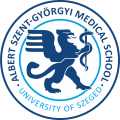University of Szeged
Albert Szent-Györgyi Medical School
Foreign Students' Secretariat
Your Education. Our Mission.
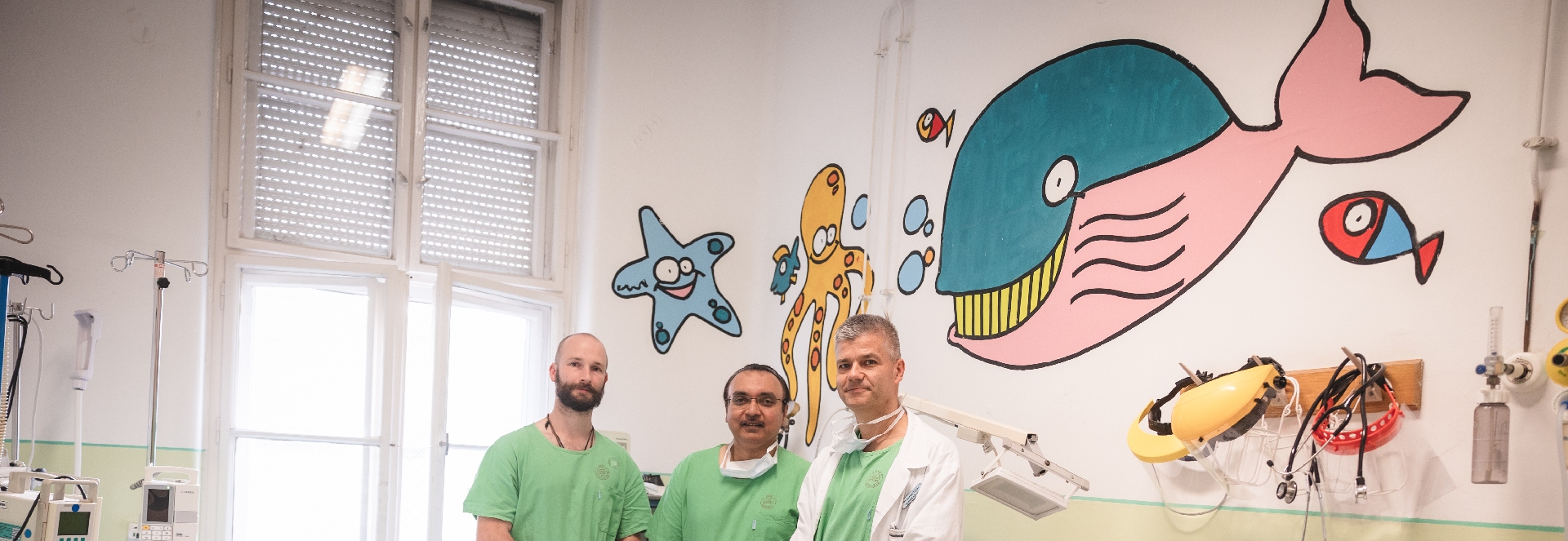
Baby boy born with rare defect of abdominal wall saved at Szeged Children's Hospital
A two-year-old boy born with a rare developmental disorder (omphalocele) was operated on at the Szeged Children's Hospital.
A two-year-old boy born with a rare developmental disorder (omphalocele) was operated on at the Szeged Children's Hospital. The operation was performed by the world-renowned, award-winning paediatric surgeon Dr. Amulya Saxena (UK) and doctors from the Albert Szent-Györgyi Clinical Centre. This was the fourth time that the child from Hódmezővásárhely had undergone an operation. After the fifth one, Benett is expected to live a full life.
An omphalocele is a developmental disorder that causes the abdominal organs to protrude through the umbilicus. Depending on the size of the abdominal wall defect, the internal organs are exposed to different degrees, covered only by a thin membrane of peritoneum and amniotic sac. During normal foetal development, internal abdominal organs first develop outside the body, then return into the abdominal cavity, after which the abdominal wall closes. The surgical treatment of congenital abdominal wall closure defects is usually uncomplicated, but there is a rare and severe form, giant omphalocele, in which the entire liver and other abdominal organs are located outside the abdominal cavity. Its treatment is complex and it can only be carried out in several steps.
Benett Kovács was born prematurely via caesarean section and all his abdominal organs were outside the abdomen. Doctors at the Albert Szent-Györgyi Clinical Centre had already performed three operations on him. The fourth surgical intervention was performed with the help of Dr Amulya Saxena from London, as Benett's giant omphalocele presented an extraordinary challenge to the doctors in Szeged.
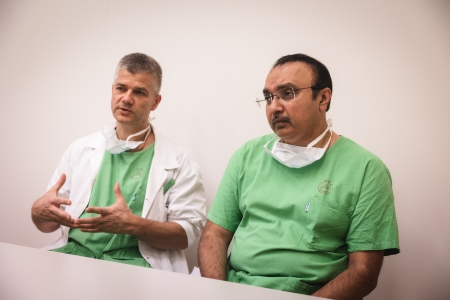
The symptoms of omphalocele are clearly visible to the naked eye after birth. The protruding organs are always covered by a membranous sac of peritoneum and amniotic sac, unlike in a similar open abdominal pathology, gastroschisis, where the protruding organs are not covered by such a sac. The sac may contain several abdominal organs (intestines, stomach, liver) or only loops of intestines. In even rarer cases, the bladder may also prolapse outside the abdominal wall. This is considered to be a serious condition requiring complex care. These organs are very fragile, therefore they cannot be returned in one go. That's why we called in Dr Amulya Saxena, one of the world's best-known and respected paediatric surgeons and President of the European Association of Paediatric Surgeons, to help two-year-old Benett. ’Our professional relationship goes back a long time, he has visited Szeged several times and gave us excellent professional advice,’ said Dr. Tamás Kovács, Head of the Department of Paediatric Surgery in Szeged.
The boy from Hódmezővásárhely had already undergone three surgeries. The first one took place immediately after his birth, when his organs were placed in a sterile plastic container - a so-called silo -, the second one involved replacing the silo, and the third one involved closing the skin layers. The parents could hold their child for the first time after 51 days, and he was taken home after 81 days. Benett spent the first 35 days of his life in deep sedation.
During the fourth operation, which has taken place recently, Dr Amulya Saxena and Dr Tamás Kovács were able to reposition most of the abdominal organs and reduce the abdominal wall defect with a natural collagen mesh.
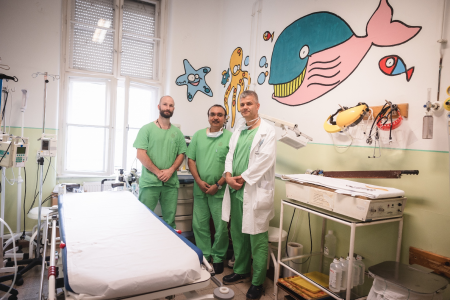
This special mesh helps to approximate the abdominal wall edges as quickly as possible and also helps the muscles to recover. It is very important to use the highest quality possible, as many complications can occur if a mesh of inappropriate quality is used. Such operations can be associated with many complications, so it is essential that surgeons cooperate with anaesthetists in the operating theatre at all times. For Benett, the procedure took three hours and proved to be moderately complicated. ‘However, we hope to repair the defect once and for all with the next operation. The goal is that by the time he is in kindergarten, everything will be back in place and he will be able to live a full life. Between 90-100% of children in modern specialist care achieve this without permanent damage to their health,’ says Dr Amulya Saxena.
The expert recently gave an online presentation, after which he was contacted by people from Hong Kong, Peru, Singapore, Sweden and some other places as well. The surgical technique used for omphalocele repair is very complex and complicated, and the professor from London is considered to be one of the best. He has been invited to most parts of the world. He is committed and motivated, even though he knows that unfortunately the conditions are not always favourable to save children with various diseases and disorders.
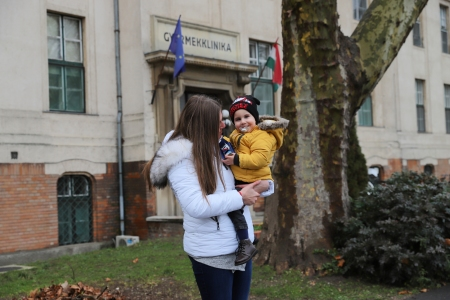
‘Before each and every intervention, I must get to know the case, the patient, their parents, their family and, of course, the colleagues I am operating with. It is very important to improvise as little as possible. Fortunately, in Szeged everything was transparent and went smoothly. I believe that the fifth surgery will be no different,’ said Dr. Saxena.

